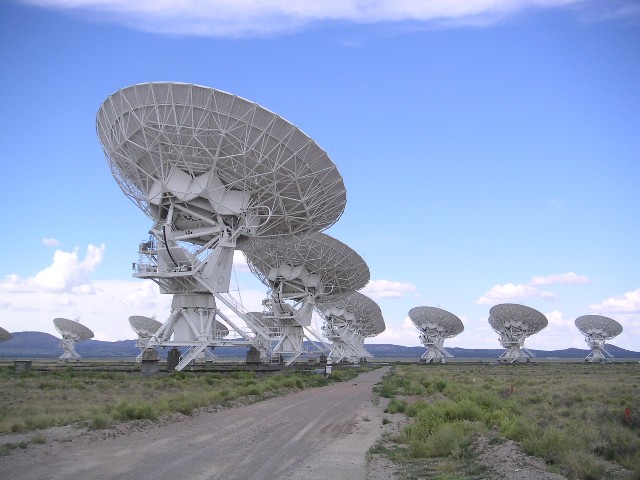- The Search for Extraterrestrial Intelligence (SETI) includes the use of radio telescopes / radio astronomy techniques to attempt to receive, identify and interpret hypothetical radio frequency communications from such intelligent life. Radio communications (that is, radio frequency electromagnetic communications) would seem the most promising form of communication for potential interstellar communications (although other communication means are hypothetically possible, such as laser communications).
- The ultimate homerun of astrobiology, success in this effort would not only affirmatively answer the massive question of whether life exists beyond Earth (and indeed beyond the Solar System), but also the exponentially more massive question of whether intelligent life exists beyond Earth and in another star system. And then there is, of course, the intriguing matter of the content of the decoded communications.
- Just as visible electromagnetic signals (i.e., light) can be received from sources very close by (look up and see light with the source being a ceiling light fixture a few feet away) or incredibly far away (look into the night sky and see light from a star a hundred light years away, or even a thousand), so can radio electromagnetic signals.
- Like light, radio signals can be received from sources very close by (such as by a receiver in radio controlled car, the source being the radio controller held by a child across the room), or from not as close by (such as by a person’s car stereo receiver from an FM broadcasting tower), or, in fact, from incredibly far away, such as by a radio telescope, from a distant star or another galaxy.
- Radio astronomy generally, and radio SETI, can use telescopes with large “dish”-like receivers, or arrays of many such telescopes essentially working together (called radio interferometry), to receive, in the strongest and clearest fashion practical, radio signals from distant star systems and celestial bodies.
- Sources include: http://en.wikipedia.org/wiki/Radio_astronomy, http://en.wikipedia.org/wiki/Interstellar_communication

© 2015 Fosdick EDS ☾><(((°>
